
Bill Mason Sand Pit (part 2)
September 10th, 2013
The Calico Pennants are still there--and I'm still in love with them.
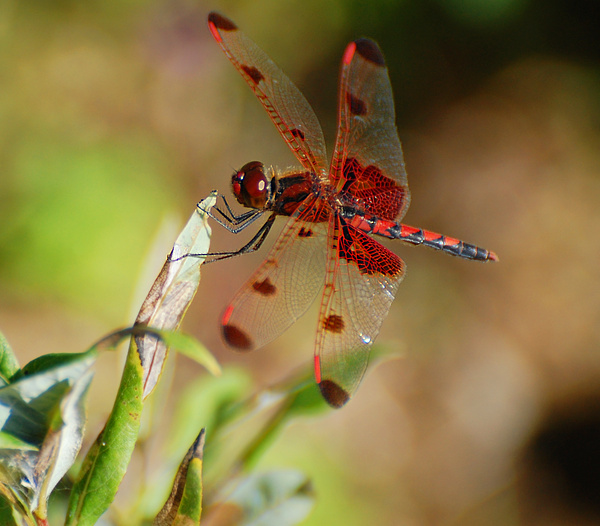
1680x1050 wallpaper
The pond supports a population of Azure Bluets, a particularly vivid bluet damselfly that I have not seen elsewhere. One online source says "often found at newly created habitat, such as borrow pits." Sounds about right!

1680x1050 wallpaper
A few migrant sandpipers around the margins of the pond provided a break from insect-watching. This Greater Yellowlegs was more skittish than the ones I often see at Andrew Haydon Park, so I could only photograph him from a distance.
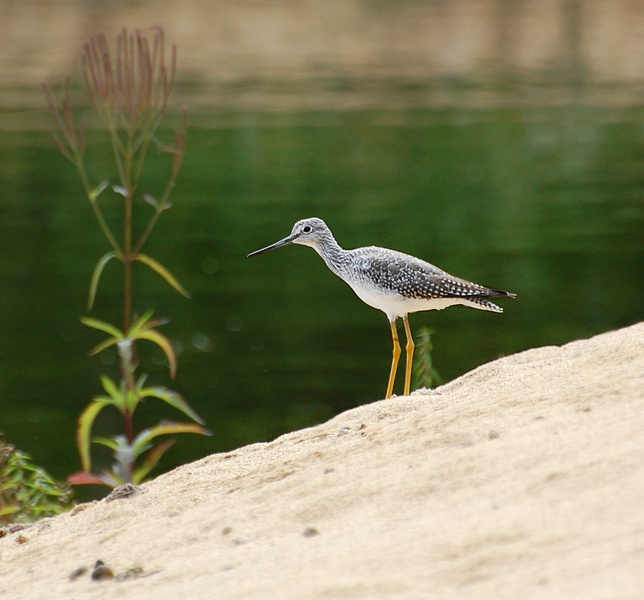
This fellow was dumped noisily on the sand after an altercation with another dragonfly:
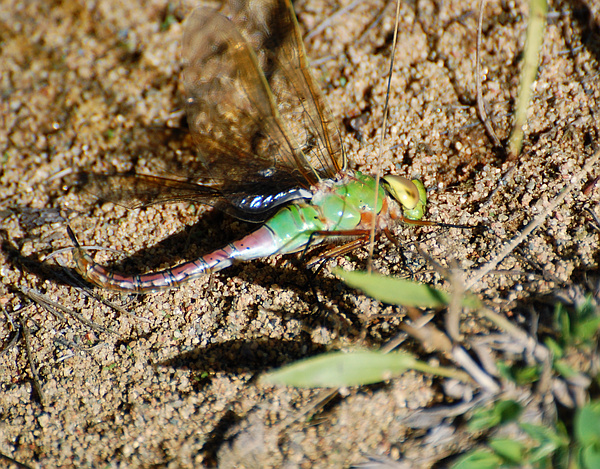
Despite his bright colors, based on the waxy appearance and curved abdomen, I think this must be a teneral (newly emerged dragonfly), specifically a teneral Common Green Darner. He managed to right himself in short order, and rested on the sand for awhile before flying off.
Bill Mason Sand Pit (part 1)
September 8th, 2013
I've been exploring the flora and fauna at the pond near Bill Mason Centre. Apparently it's a disused sand quarry. The sandy habitat attracts some unique flowers--including lots of pretty pink bell-shaped flowers in bloom right now (gerardia, I think?)--as well as interesting insects and concentrations of insects.
On my last visit I was swarmed by darners, a very large and active class of dragonflies. I like their boldness (they'll often fly right up to my face as if inspecting me), and my camera likes them because they're big enough to easily get in focus--that is, if they'll sit still long enough!
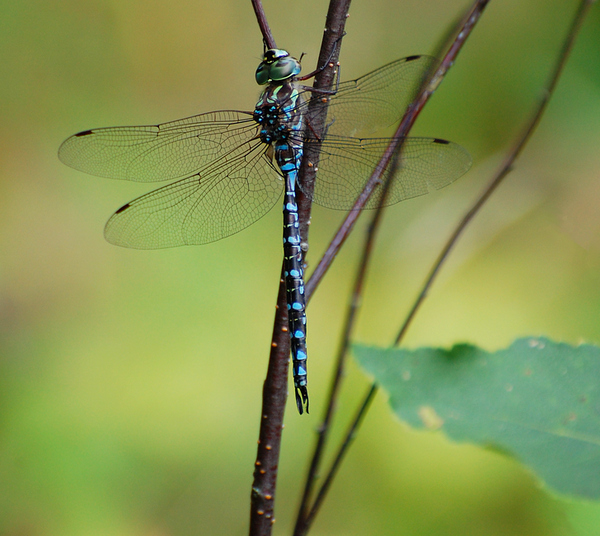
1680x1050 wallpaper
A Canada Darner, I think--they were the majority. Best viewed at wallpaper res.

Canada Darner chowing down on a small beetle.

Clouded Sulphur. Confusingly, although there exists a "Pink-Edged Sulfur", this isn't one. He was nectaring on yellow and pink flowers, appropriately enough.
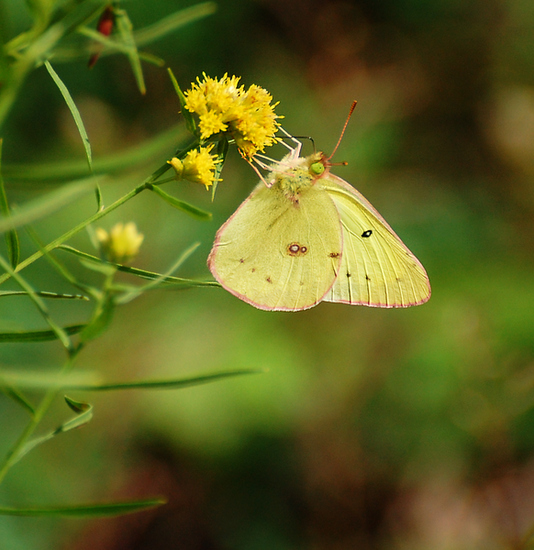
1680x1050 wallpaper
When this guy landed noisily on the sand I thought he was the strangest thing I'd ever seen:

On an impulse, I googled "cicada" back home and my mystery was quickly solved. I guess this was my first cicada. I always assumed they looked like crickets!
(Continued in next post...)
"exuberance and preposterousness"
August 30th, 2013
A selection of beautiful dragonflies and damselflies I've photographed lately, and a little about them.
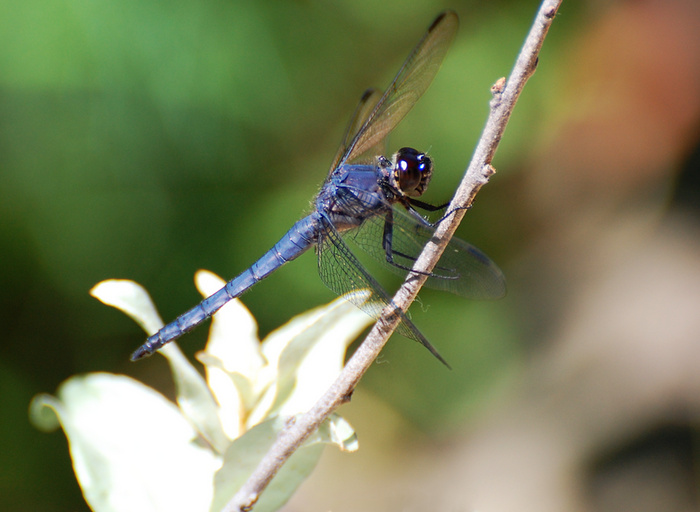
1680x1050 wallpaper
Some dragonflies you see everywhere when they're in season (maybe even from your front porch!) Others are a little more selective about their habitat. Slaty Skimmer seems to be one of the selective types. I seldom see them in general, but on the shores of Pink Lake in the Gatineau, they were perched on every other bush and flower.

1680x1050 wallpaper
The Halloween Pennants I photographed at Bill Mason Centre were females or immature males. This one is a mature male, or close to it. I found him at Andrew Haydon Park of all places. He was perched by one of the small ponds, and as if he needed the help, a bright late-afternoon sun shone behind me as I pointed the camera at him.
The male Halloween Pennnant is the inspiration for the title quote of this post, borrowed from here.
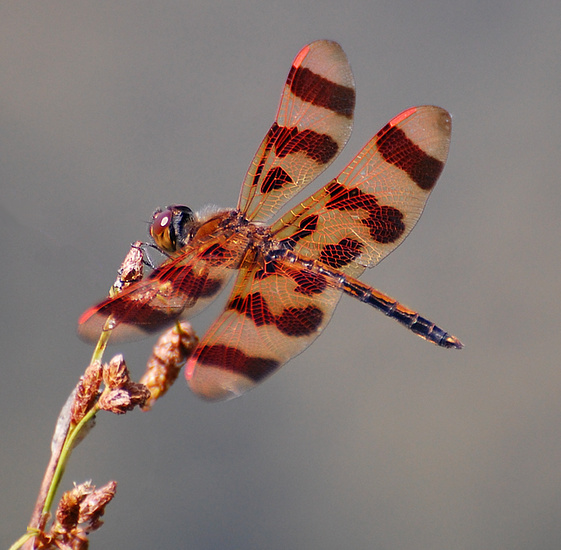
Another view of him.
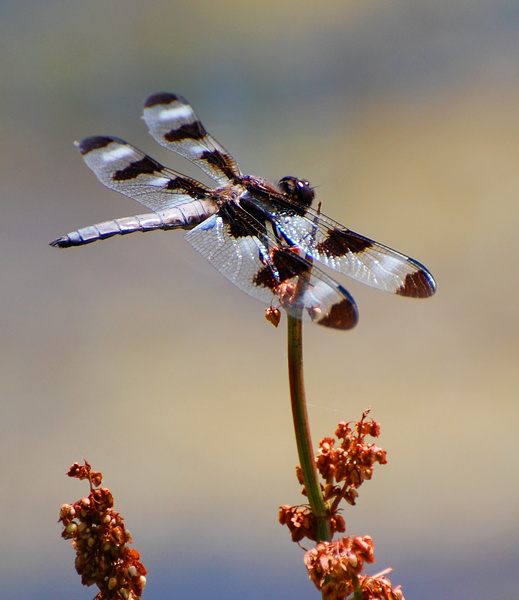
Twelve-Spotted Skimmer. Findable pretty much anywhere! Unlike darners, skimmers tend to perch out in the open and make themselves easy to see.
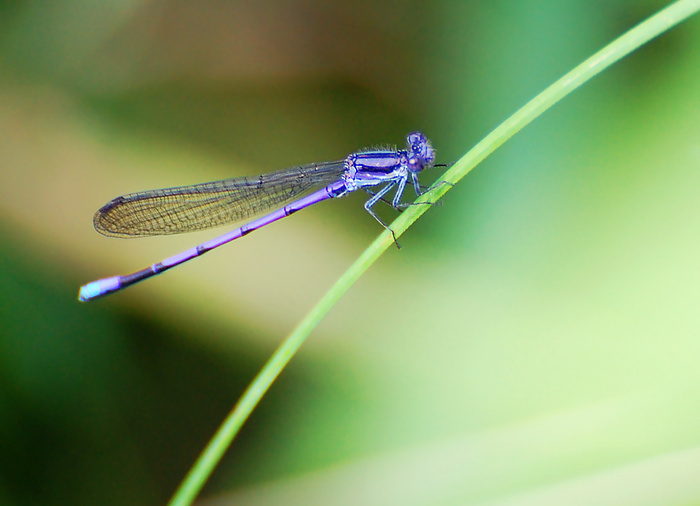
1680x1050 wallpaper
Violet Dancer. Like Slaty Skimmer, this damselfly is abundant at Pink Lake; I've also seen them elsewhere in the Gatineau such as at Chelsea Creek. I love how his thorax looks like a chunk of amethyst.
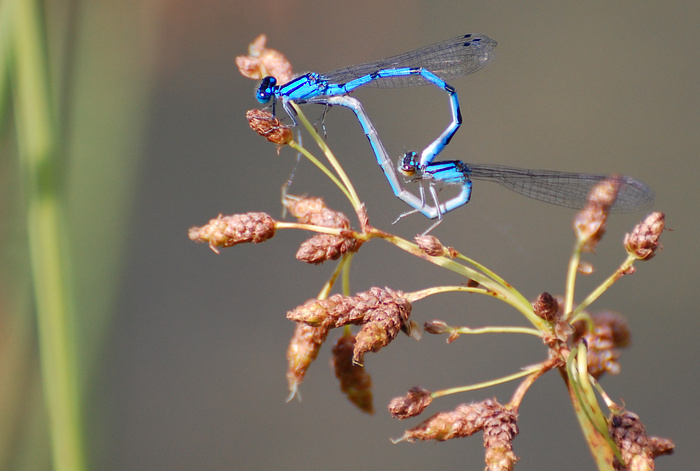
1680x1050 wallpaper
A mating pair of bluets, exact species unknown. Bluets are the tiny cerulean blue damselflies you see in summer, often teeming in the grass and underbrush near pond shores.
Hitchhikers
August 24th, 2013
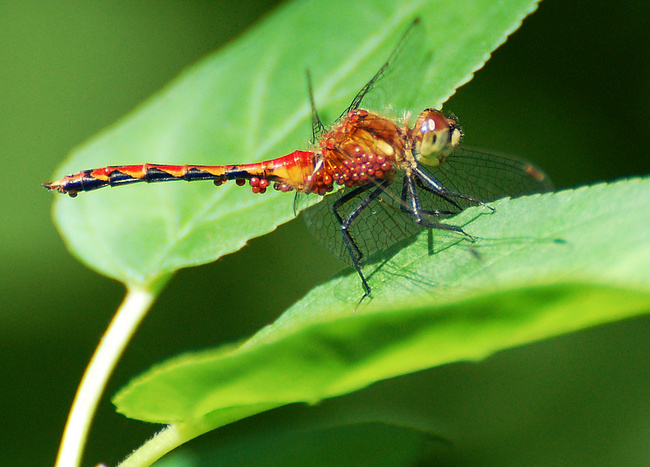
Those little things that look like growths on the dragonfly are water mites. It's only by chance that they're the same color as he is. Water mites latch onto dragonflies during their larval, water-dwelling phase. When an infested larva climbs up out of the water, sheds its skin and becomes an adult dragonfly, the mites quickly scamper off the shed skin and back onto their host. They can then stowaway to a new pond or stream.
Lord Flycatcher
August 20th, 2013
Eastern Kingbirds are so named for their bossy disposition: they defend their nesting areas fiercely, chasing and attacking crows, hawks, and even large herons. Kingbirds have been photographed appearing to ride the backs of hawks while pecking at them. I think this one has an appropriately regal air about him.
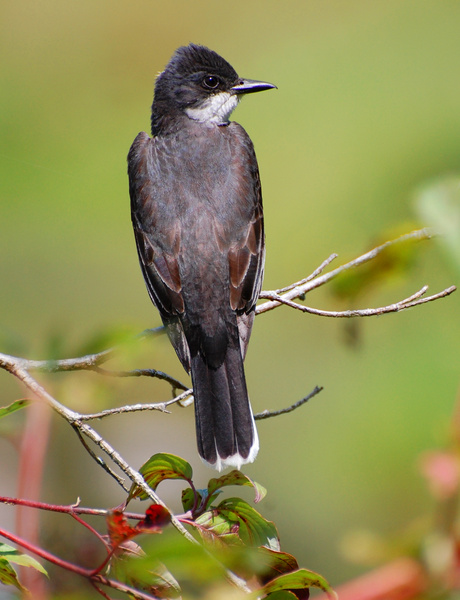
A New Dragonfly In Ottawa
August 17th, 2013
This is another of the various species of birds and insects that have been expanding their range north into our area. Prior to 2010, no Blue Dasher had ever been seen in Ottawa. In 2010 there was one. In 2011 there were lots more, and in summer 2012 Chris Lewis called them "uncountable" at Mud Lake and Petrie Island. It's hard to believe how quickly what was a vanishly rare dragonfly has become commonplace. I photographed this one from the west platform at Mud Lake.
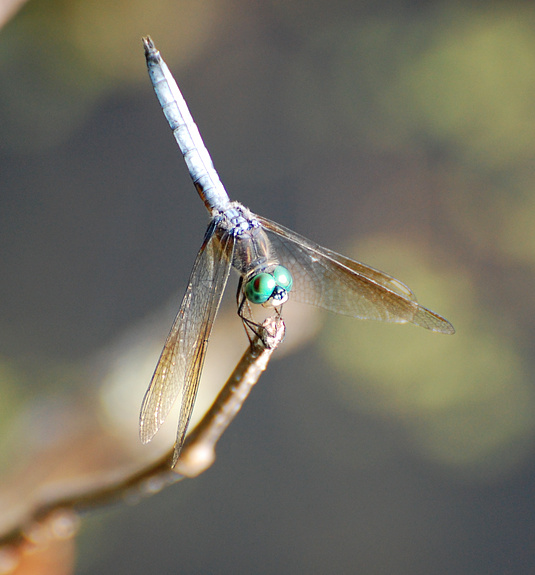
1680x1050 wallpaper
I love what the early morning light did for this picture.
Bronze Copper
August 13th, 2013
It's been a bad year for butterfly watching, so I was excited to find this fellow at the west end of Andrew Haydon Park. Bronze Coppers like wet, marshy areas. A stand of Flowering Rush (a flower that grows up out of the water, often alongside cattails) was the ideal place to find one.
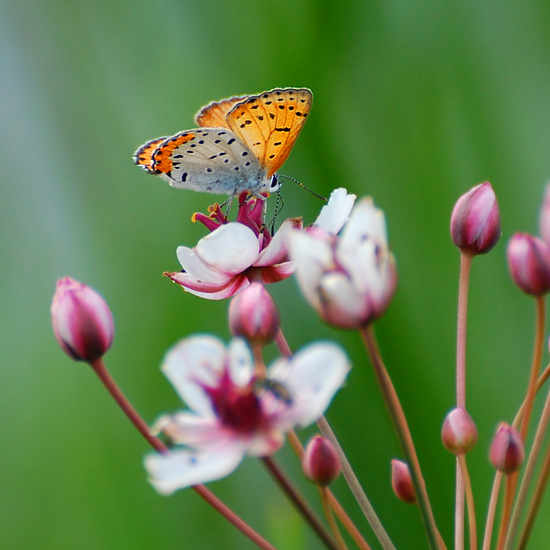
1680x1050 wallpaper
Long-Leaved Speedwell
August 10th, 2013
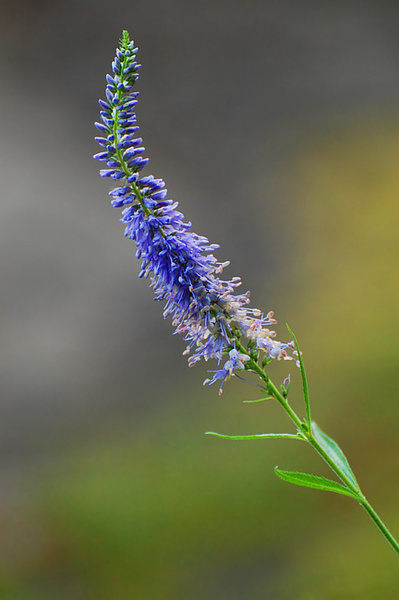
A morning at Bill Mason Centre (part 3)
August 1st, 2013
I also found Halloween Pennant at the Bill Mason pond--a very pleasant surprise. It's another uncommon one, found mainly south of here, and I was expecting to have to go further afield to get it. But actually I've seen quite a few more since then at several locations, so the online checklist that designates it as "scarce" may be out of date. Climate change seems to be coaxing a number of formerly more southern species into our area, and I'm noticing it this year more than ever before. Egrets, Deer Ticks, Halloween Pennants, you name it!
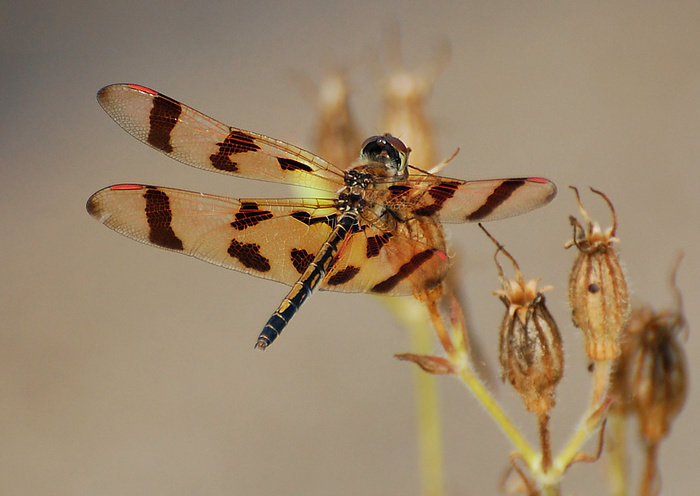
To annoy the 5'3" nature photographer, pick a six-foot-tall Great Mullein for your perch.

Teneral (newly emerged) damselflies were all over the pond shore, so young that they didn't even have their colors yet. In the picture below, you can just see what I think is a discarded larval skin curled over the flowers. The second picture has a better view of a larval skin.
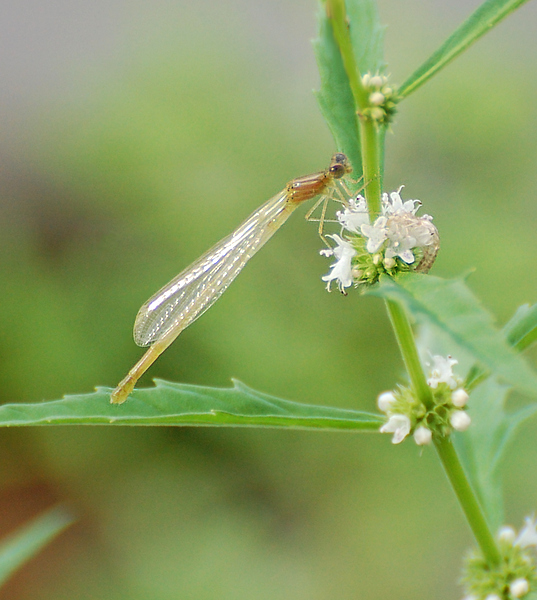
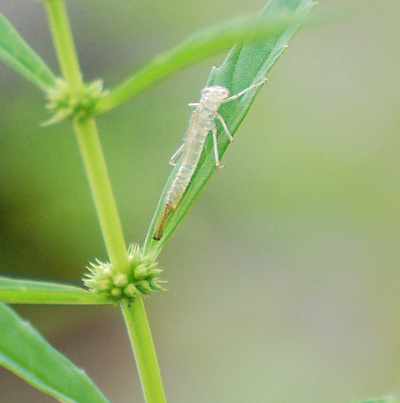
Odonates spend their larval days creeping underwater, hunting other aquatic insects, worms, and even baby fish. If you have a strong stomach (frankly, it helps if you have an outright affinity for horror movies), check out this Youtube video. I know I'll never look at damselflies the same way again!
A morning at Bill Mason Centre (part 2)
July 30th, 2013
This post contains the reason why I went to Bill Mason Centre.
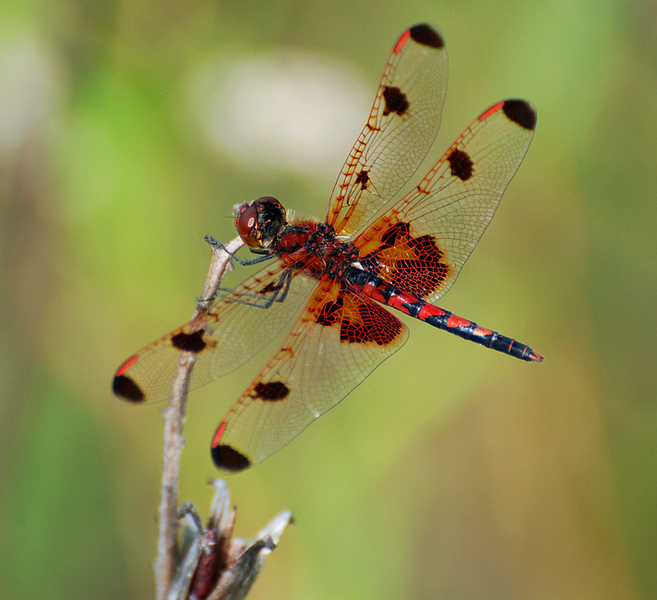
1680x1050 wallpaper
Just look at that. Have you ever seen a dragonfly more splendid? I hadn't. When I told Gillian that I was eager to see my first Calico Pennant, she suggested the "sandy pond" at Bill Mason Centre as a place to look for them. I'd never been to that part of BMC before--didn't even realize there was a sizable pond in the vicinity--but with a little exploration of side trails I managed to find it. Then I pored over the weedy vegetation on the shoreline looking for interesting odes. Found my Calico Pennants and quite a bit more besides!
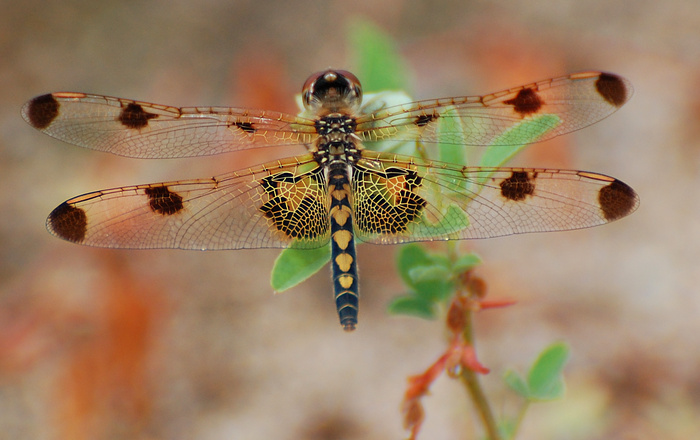
1680x1050 wallpaper
The female Calico Pennant has her own beauty that rivals his. View at high res to appreciate how her wing patches are like luminous stained glass.
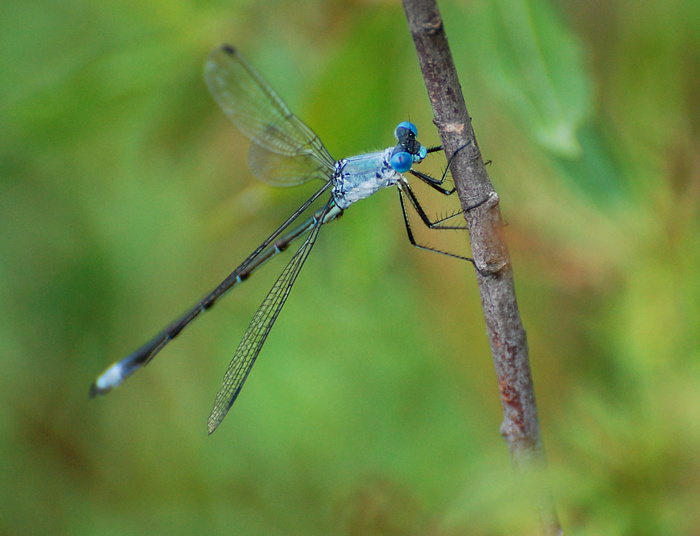
1680x1050 wallpaper
This spreadwing damselfly--Amber-Winged Spreadwing, I think--also modelled nicely for me. The bluish-white powder on his thorax and the tip of his abdomen is called "pruinosity." Some male odonates develop it as they mature. The pruinosity reflects ultraviolet light, which means that to insect eyes (and bird eyes), it must look even more striking than it does to us.
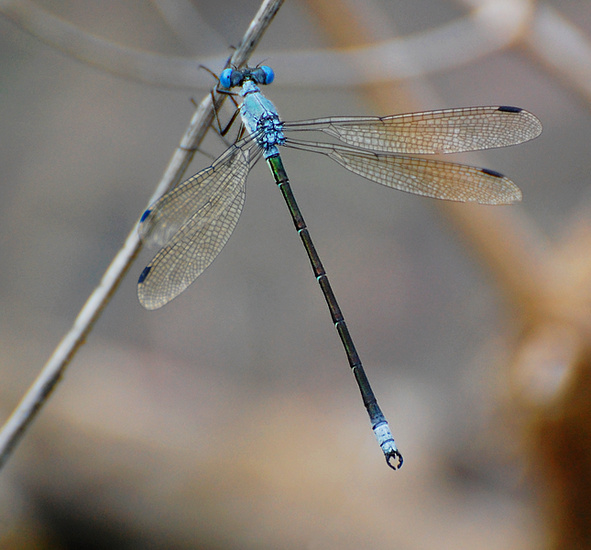
1680x1050 wallpaper
(Continued in next post...)
|
